Espresso Coffee foam Waltz
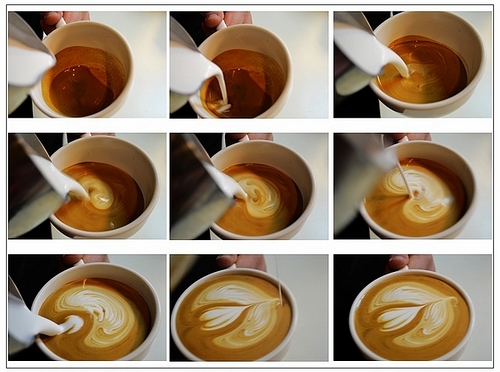
There are two main types of Latte Art: Free Pour, which "pulls" patterns while pouring hot milk into espresso, and Etching, which uses accessories such as chocolate sauce and toothpicks to "carve" directly on the foam on the surface of the latte after making the latte.
Compared with carving, the former is more wonderful, while the latter is more versatile. This is because when carving, the foam on the surface of the latte is stable and can support colored sauces such as chocolate sauce and caramel syrup, not only giving baristas more time, but also more freedom in drawing and composition.
The wonder of the flower is that the pattern is formed in the process of preparing the latte. The secret of pulling flowers, experienced baristas may start with how to make espresso and hot milk foam-but physically, what is it all about?
How is the coffee flower formed?
The coffee that makes coffee flowers is called "Espresso", which is what we often call espresso or espresso. This is a kind of coffee with a strong taste, which is obtained by washing the coffee powder under high pressure after being finely ground by boiling hot water. On the surface of espresso is a layer of reddish-brown foam called crema.
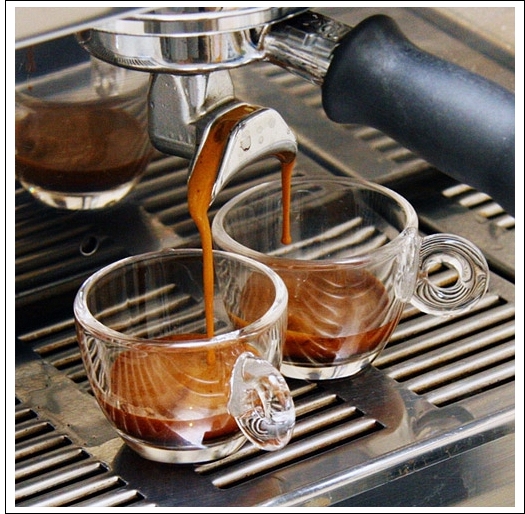
The coffee fat you get when you get espresso (picture from en.wikipedia.org)
The presence of coffee fat is often seen as a sign of the quality of espresso, which accounts for more than 10% of espresso in volume. Coffee fat contains a lot of gases, about half of the total volume.
In the image below, when you look at the structure of coffee fat under an optical microscope, you can see that it contains bubbles, fat particles (usually less than 10 microns) and some solid particles (fragments of the cell wall of coffee beans).
The existence of coffee fat is an important factor in the formation of coffee flower.
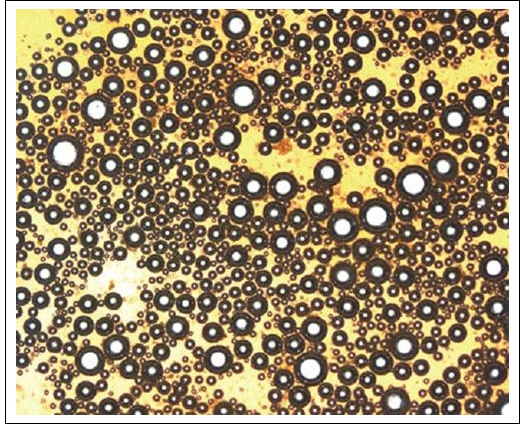
When you look at the coffee fat under an optical microscope, you can see that it contains bubbles, fat particles, and some solid particles such as fragments of the cell wall of coffee beans (photo from Ernesto Illy & Luciano Navarini / Neglected Food Bubbles)
The hot milk used to make coffee flowers is also pre-treated. Through stirring or other methods, the surface of the hot milk forms a layer of milk and air mixed micro-foam (Microfoam).
How to make the foam of milk more and more lasting can also become a subject of scientific research. Such research has been done, as evidenced by the cappuccino bubble recorded in the laboratory.
In the process of mixing hot milk and espresso, we have two kinds of foam mixed together, one is the mixture of air and milk on the surface of milk, and the other is the mixture of fat, gas and espresso on the surface of espresso. Both bubbles are relatively stable, with coffee fat foam generally lasting about 10 minutes and foam formed by milk and air for as long as a few minutes.
After these two kinds of foams are mixed together, because their particles are very large (both micron-sized) and squeeze together, the diffusion process of the particles is very slow, without stirring. The mixing rate between the two bubbles will be very slow, so the boundary between the bubbles will remain clear for a long time. In this way, the pattern made when the barista pours the milk can be kept for long enough for customers to appreciate.
So the coffee flower is actually a mixture of two foams (not liquids). After knowing this, when I look at the coffee flowers, apart from admiration, does it add another feeling?
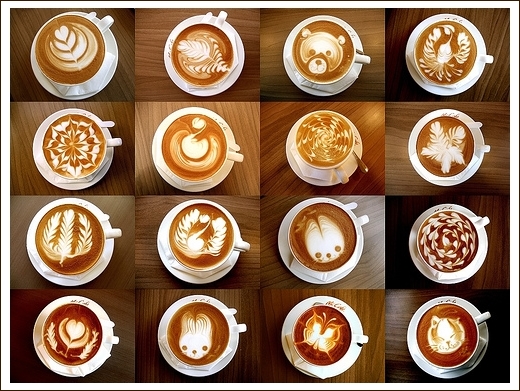
Some readers may ask, why do bubbles have to be mixed together, but not liquids of different colors?
If there is no foam, when we pour milk into coffee, they are not immediately evenly mixed with each other. Although in detail there are still micron-sized particles inside the two liquids, these particles are not close to each other, and the particles account for only a small part of the liquid and do not have the stability of foam. Therefore, the interface of the mixing of these two kinds of liquids is not only because the internal liquid flow is very unstable, but also becomes blurred quickly because of diffusion, which can not be made into a flower-pulling pattern.
Important Notice :
前街咖啡 FrontStreet Coffee has moved to new addredd:
FrontStreet Coffee Address: 315,Donghua East Road,GuangZhou
Tel:020 38364473
- Prev

Salvadoran coffee. Coffee from hot springs.
Salvadoran coffee ranks side by side with Mexico and Guatemala as the producers of Asa and Merdo, and is fighting for the top one or two places in China and the United States with other countries. The highlands of origin are large coffee beans of all sizes, which are fragrant and mild in taste. Like Guatemala and Costa Rica, coffee in El Salvador is graded according to altitude, and the higher the altitude, the better the coffee
- Next
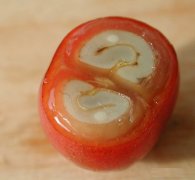
Boutique coffee bean knowledge coffee bean anatomy
Coffee bean close-up, coffee bean internal cross-section map of the coffee fruit after the peel of the freshly ripe coffee fruit on the tree, the coffee fruit without the peel, inside two coffee beans with endocarp, silver peel coffee bean coffee fruit internal structure (coffee fruit includes exocarp, mesocarp, pectin layer, endocarp, coffee bean silver skin, endosperm, embryo.) Internal knot of coffee beans
Related
- Beginners will see the "Coffee pull flower" guide!
- What is the difference between ice blog purified milk and ordinary milk coffee?
- Why is the Philippines the largest producer of crops in Liberia?
- For coffee extraction, should the fine powder be retained?
- How does extracted espresso fill pressed powder? How much strength does it take to press the powder?
- How to make jasmine cold extract coffee? Is the jasmine + latte good?
- Will this little toy really make the coffee taste better? How does Lily Drip affect coffee extraction?
- Will the action of slapping the filter cup also affect coffee extraction?
- What's the difference between powder-to-water ratio and powder-to-liquid ratio?
- What is the Ethiopian local species? What does it have to do with Heirloom native species?

